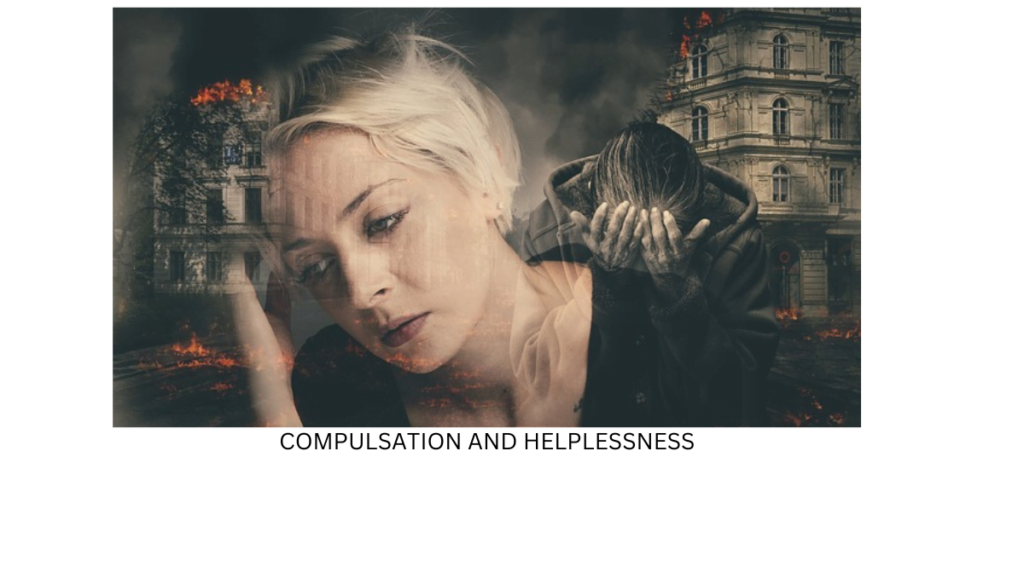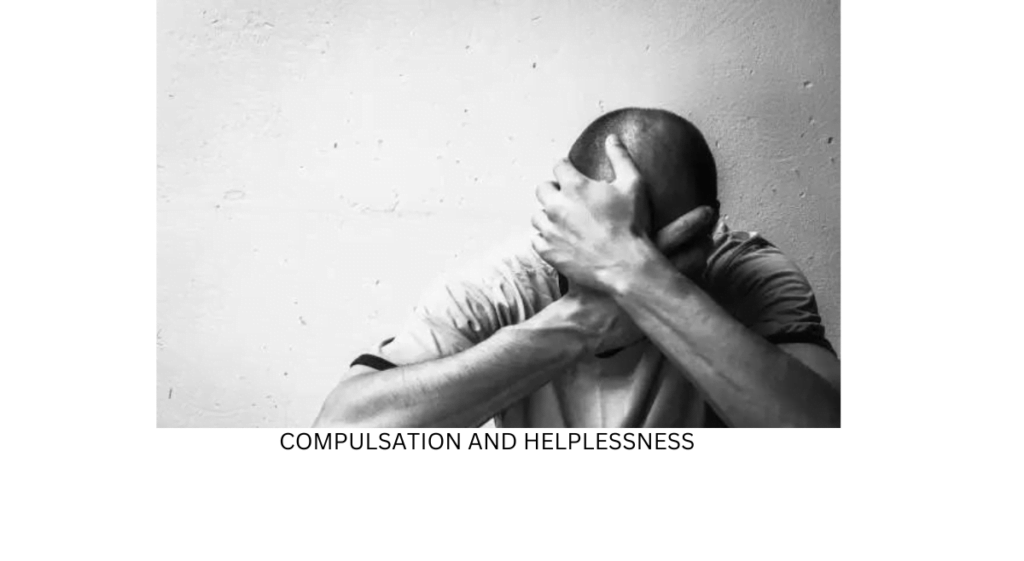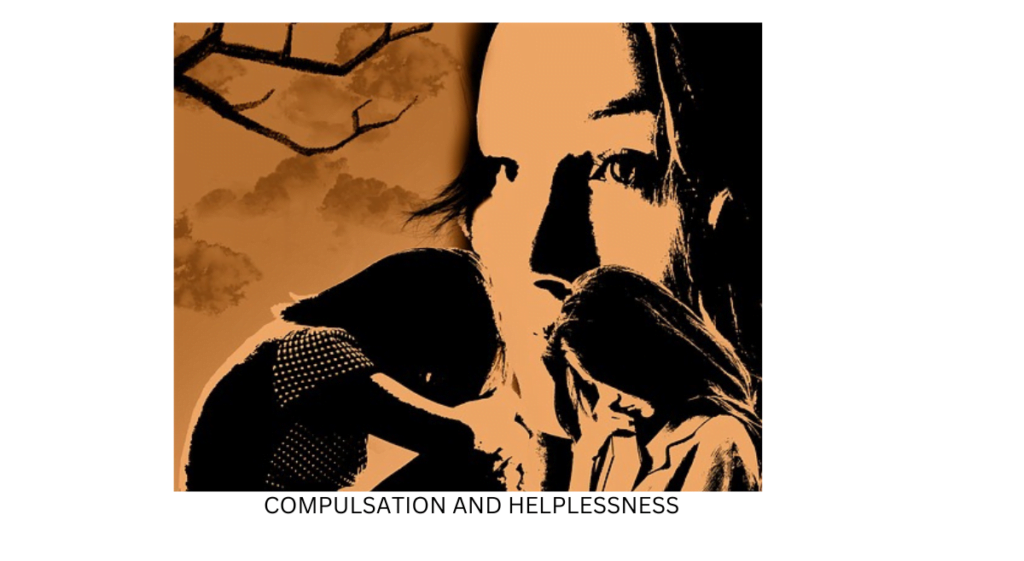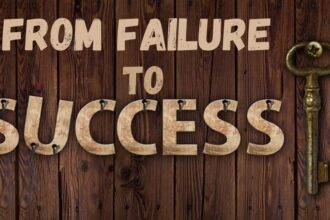Introduction:-
Compulsion and Helplessness:Causes & Solutions

Compulsion, often synonymous with the inability to resist certain behaviors or urges, can lead individuals into a state of helplessness. This state can be deeply distressing, affecting their daily lives and overall well-being. Understanding the causes behind compulsion and exploring effective solutions is essential to help individuals regain control and lead healthier, more fulfilling lives.
In this article, we will delve into the complex world of compulsion, examining its causes and presenting practical solutions to overcome it.
Understanding Compulsion and Helplessness
Compulsion is a term used to describe the irresistible urge to engage in specific behaviors or actions, often against one’s own will or better judgment. These behaviors can vary widely and may include repetitive actions, obsessions, or even addictions. Individuals experiencing compulsion often feel driven to act in a certain way, even when they are fully aware that these actions may have negative consequences.

Common forms of compulsion include:
- Obsessive-Compulsive Disorder (OCD): This mental health disorder involves the presence of obsessions (unwanted, intrusive thoughts) and compulsions (repetitive behaviors or mental acts performed to reduce distress).
- Addictions: Compulsive behaviors can manifest as addictions to substances (e.g., drugs, alcohol) or activities (e.g., gambling, shopping). These behaviors are often driven by a strong, irresistible urge to engage, even when aware of the negative consequences.
- Body-Focused Repetitive Behaviors: Conditions like trichotillomania (hair-pulling) and dermatillomania (skin-picking) involve repetitive, compulsive actions directed at the body.
- Compulsive Eating: Binge eating or overeating despite the desire to stop is a common form of behavioral compulsion related to food.
The Causes of Compulsion
Compulsion arises from a complex interplay of psychological, biological, and environmental factors. Understanding these causes is a crucial step in addressing the issue effectively.
1. Brain Chemistry
Changes in brain chemistry, particularly in the levels of neurotransmitters like serotonin and dopamine, are often associated with compulsive behaviors. These neurotransmitters play a role in regulating mood, pleasure, and impulse control. An imbalance can contribute to the urge to engage in compulsive actions to alleviate discomfort or seek pleasure.
2. Genetic Predisposition
There is evidence to suggest that genetics plays a role in the development of compulsive behaviors. Individuals with a family history of compulsive disorders may have a higher risk of developing similar issues.
3. Trauma and Stress
Traumatic experiences, chronic stress, or unresolved emotional issues can contribute to the development of compulsive behaviors. Engaging in compulsive actions may serve as a coping mechanism to manage emotional distress.
4. Environmental Triggers
Certain environmental factors can trigger or reinforce compulsive behaviors. For example, easy access to addictive substances or exposure to situations that provoke anxiety or obsession can perpetuate compulsion.
5. Psychological Factors
Psychological conditions, such as anxiety and depression, are often co-occurring with compulsive behaviors. Compulsion may offer temporary relief from the distress associated with these conditions.
The Cycle of Helplessness
Compulsion often leads individuals into a cycle of helplessness. This cycle typically involves the following stages:
- Trigger: An external event, internal thought, or emotional state triggers the compulsive urge.
- Compulsion: The individual feels driven to engage in the compulsive behavior or action, often unable to resist despite knowing the negative consequences.
- Temporary Relief: Following the compulsion, there may be a temporary sense of relief or pleasure, reinforcing the behavior.
- Guilt and Shame: Soon after, guilt and shame set in as the individual recognizes the negative consequences or the inability to control the behavior.
- Repetition: The cycle repeats as the individual encounters new triggers, leading to a continuous loop of compulsion and helplessness.
Solutions for Overcoming Compulsion
Breaking the cycle of compulsion and helplessness is challenging but entirely possible with the right strategies and support. Here are some effective solutions:
1. Therapy
Cognitive-Behavioral Therapy (CBT): CBT is highly effective in treating various compulsive disorders, including OCD and addictions. It helps individuals identify and challenge irrational thoughts and behaviors, leading to healthier coping mechanisms.
Exposure and Response Prevention (ERP): This specialized form of CBT is particularly beneficial for OCD. It involves exposing individuals to their obsessions while preventing them from engaging in compulsions, gradually reducing the compulsion’s power.
2. Medication
In some cases, medication may be prescribed to help manage compulsive behaviors, especially when they are associated with specific mental health conditions. Antidepressants, anti-anxiety medications, and medications that target specific neurotransmitters can be effective.
3. Support Groups
Participating in support groups can provide individuals with a sense of community and understanding. Sharing experiences with others who have faced similar challenges can be comforting and inspiring.
4. Lifestyle Changes
Implementing healthy lifestyle changes can help reduce stress and anxiety, which often exacerbate compulsive behaviors. Regular exercise, a balanced diet, and adequate sleep can contribute to overall well-being.
5. Mindfulness and Relaxation Techniques
Practices like mindfulness meditation and deep breathing exercises can help individuals manage anxiety and reduce the urge to engage in compulsive behaviors.
6. Seek Professional Help Early
Early intervention is crucial in addressing compulsive behaviors. If you or someone you know is struggling with compulsion, seek professional help as soon as possible. The earlier treatment begins, the better the chances of successful recovery.
What wrong decisions should a person protect himself from under compulsion and helplessness?
Under compulsion and helplessness, a person can be easily swayed into making wrong decisions. Here are a few examples of wrong decisions that people should protect themselves from under these circumstances:

- Signing a contract without reading it carefully. It is important to read and understand any contract before signing it. If you are under pressure to sign a contract, ask for time to review it with an attorney or other trusted advisor.
- Making a financial decision without understanding the risks involved. If you are considering making a major financial decision, such as investing in a new business or buying a house, make sure to do your research and understand the risks involved.
- Agreeing to do something that you are not comfortable with. If you are being pressured to do something that you are not comfortable with, such as taking drugs or having sex, say no. It is okay to set boundaries and protect yourself.
- Admitting guilt for something that you did not do. If you are being accused of a crime, do not admit guilt unless you are sure that you are guilty. You have the right to remain silent and to have an attorney present during questioning.
- Giving up on your dreams. It is important to never give up on your dreams, even if you are facing challenges. If you are feeling helpless or discouraged, talk to someone you trust about how you are feeling.
It is important to remember that you have the right to make your own decisions, even if you are under pressure from others. If you are feeling compelled or helpless, it is important to seek help from a trusted friend, family member, or professional.
Here are some additional tips for protecting yourself from making wrong decisions under compulsion and helplessness:
- Take your time. Don’t feel pressured to make a decision quickly, especially if it is a major decision.
- Get multiple opinions. Talk to people you trust and get their input on the decision.
- Trust your gut. If something feels wrong, it probably is.
- Don’t be afraid to say no. It’s okay to say no to someone, even if they are in a position of authority over you.
- Seek professional help. If you are struggling to make a decision, talk to a therapist or counselor. They can help you to weigh the pros and cons of each option and make a decision that is right for you.
Remember, you have the power to make your own decisions. Don’t let anyone else pressure you into making a decision that you don’t want to make.
Conclusion
Compulsion and the subsequent feeling of helplessness can be distressing, but they are not insurmountable challenges. By understanding the causes behind compulsive behaviors and exploring effective solutions, individuals can regain control of their lives and break free from the cycle of compulsion.
Remember that seeking professional help is a crucial step in the recovery process. With the right support, therapy, and strategies, individuals can overcome compulsion, regain their sense of agency, and lead healthier, more fulfilling lives.





